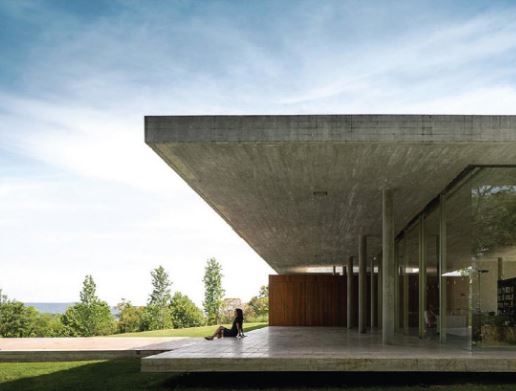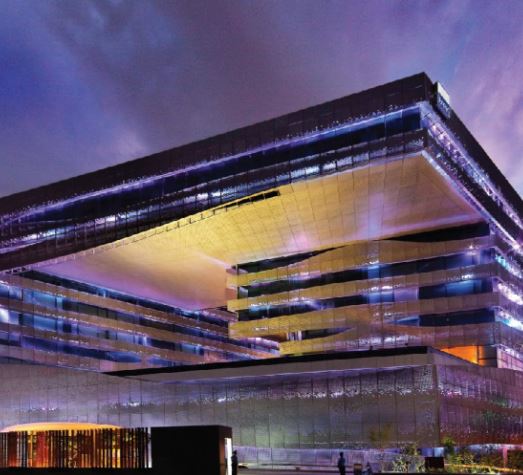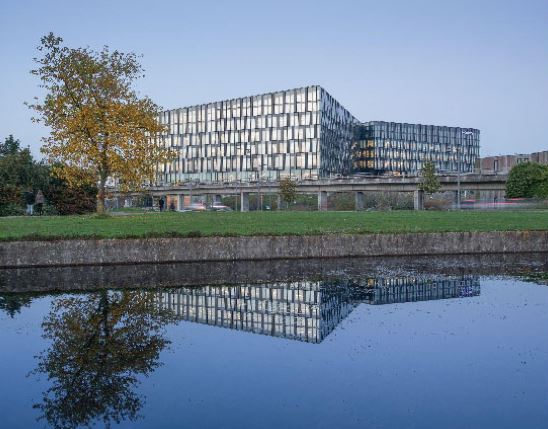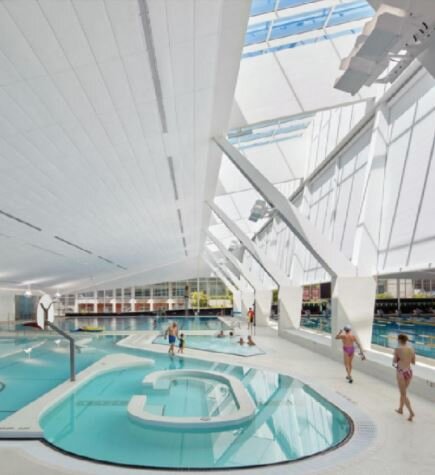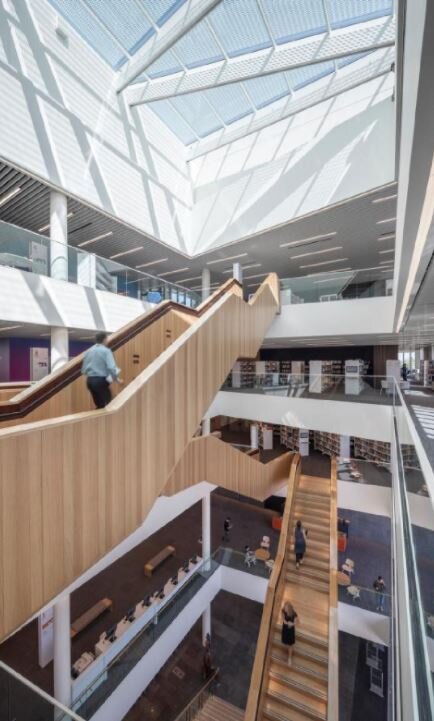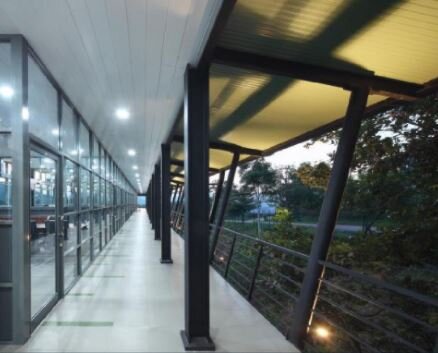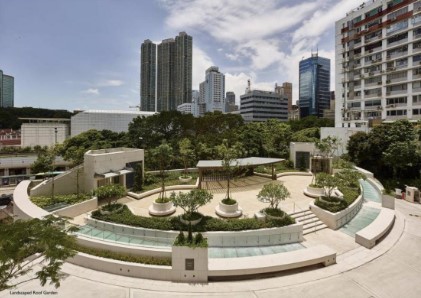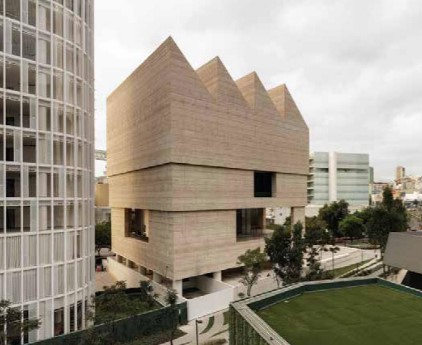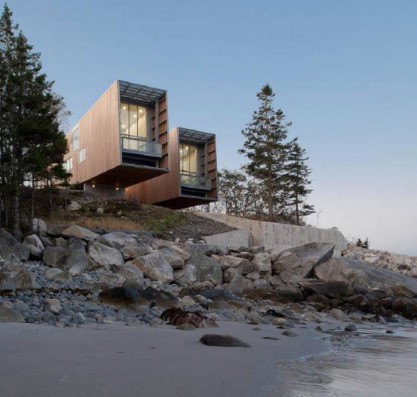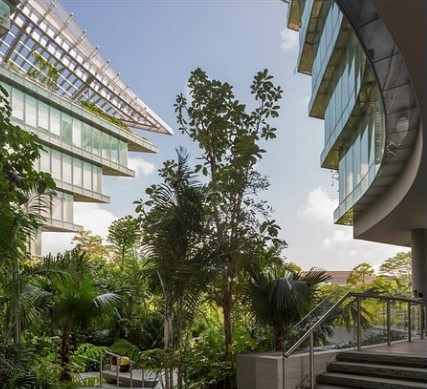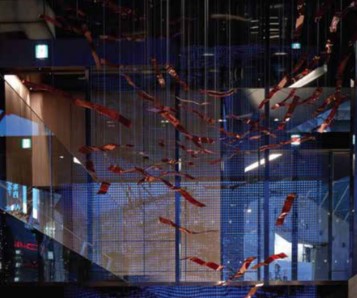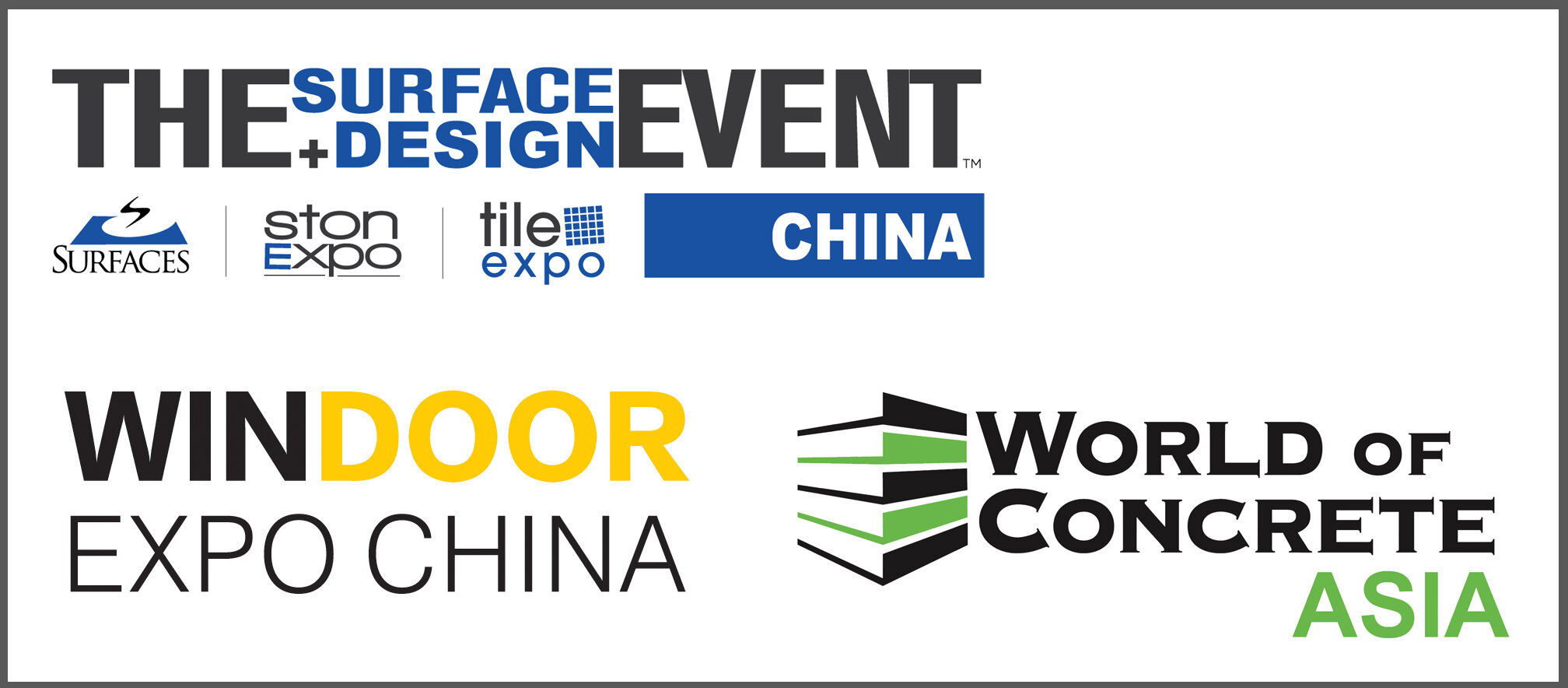The 2024 AIA International Design Awards
SUBMIT By Friday 16 AugusT - Submissions Closed!
AIA International is the broadest geographical component of the American Institute of Architects. The AIA International Design Awards recognize best practices, innovative thinking, and design excellence of AIA members’ projects worldwide. All members of AIA International are eligible to submit entries for projects located anywhere outside the US. We also welcome applications from AIA members in the US as well as those who were not members previously in the Open International category.
Let’s showcase the best architecture in the world together!
With member insights and submissions, the AIA International Design Awards Program aims to share the importance of architecture and of the role of architects to design for people and planet, towards a future of health, inclusivity and stewardship.
The Categories:
ARCHITECTURE
INTERIOR architecture
UNBUILT PROJECTS
URBAN DESIGN
OPEN INTERNATIONAL
FIRM AWARD
Sustainable Future Award
Inclusive Design Excellence Award
(L-R) Marcio Kogan; Hon FAIA, Redux House; 2014 Honor Award / SOM; Park Hotel India; 2014 Honor Award / Henning Larsen, Nordea Bank HQ; 2018 Honor Award
Eligibility
All Architect and International Associate members in good standing of AIA International are eligible to submit entries for projects located anywhere in the world outside the US and its territories. (Note: members of AIA International include full members of one of the International chapters - AIA UK; AIA Continental Europe; AIA Hong Kong; AIA Japan; AIA Middle East; AIA Shanghai and AIA Canada - and International members who do not have a local chapter).
All Architect members in good standing of AIA International are eligible to submit entries in all categories.
All International Associate and Associate members in good standing of AIA International are eligible to submit entries in the Open International category.
All members in good standing of the AIA, who are members of a US chapter, are eligible to submit projects located in the domain of AIA International, i.e. outside the US and its territories, in the ‘Open International’ category.
Built and Unbuilt work must have been completed since January 1, 2019.
The AIA member submitting the project must have been an AIA member in good standing at the time the design of the submitted project was undertaken.
Where the submitting architect is not currently an AIA member, they must complete a membership application and purchase one membership for the current year.
The AIA member submitting the project must be the primary author of the design submitted. When one architect is not the sole author of the design, all other participants contributing substantially to the design must be given credit as part of the submission.
Projects designed by joint venture or associated architects should be submitted by one member only; credit for all design participants is to be noted in the entry form under Collaborative Acknowledgements.
All entries that meet the requirements of their respective categories are eligible regardless of size, budget, style, location or building type.
Projects which have received a local Chapter Award (either from an International Chapter or in the US) or which have received a National Award, are eligible for submission to the AIA International Awards Program.
Work by architects or design firms serving as jurors for the current year’s awards is ineligible.
Architecture firms submitting for the Firm Award must be based in the territory of AIA International. Multi-national firms headquartered in the US are eligible so long as the submitting office is located in the territory of AIA International, and is a fully functioning office (design, construction documentation, and construction administration). Proof of this may be required. The decision of the Awards program administrators as to the eligibility of a firm is absolute and final.
Architecture firms submitting for the Firm Award must be at least 51% owned by, or have a majority of firm leadership be, Architect or International Associate AIA members in good standing. (This includes FAIA and Hon. FAIA members.)
AIA International reserves the right to determine the eligibility of all submissions.
See ELIGIBILITY MATRIX (below) for clarification
Return to top
(L-R) Ted Watson; Int’l Assoc. AIA (MJMA & Acton Ostry Architects), UBC Aquatic Centre, 2018 Merit Award / Kristian Ahlmark, Int’l Assoc. AIA (Schmidt Hammer Lassen Architects), Christchurch Central Library, 2019 Commendation / Russell Dandeniya, Int’l Assoc. AIA (Russell Dandeniya Chartered Architects), JIFFY Office Building, 2019 Honor Award
Criteria
The jury will award AIA International Honor Awards and AIA International Merit Awards. The Jury will comprise no less than three distinguished architects including at least two AIA architects. All Jury decisions will be based solely on the materials submitted; no field trips will be taken. There will be global recognition of the awards with winners to be announced at the AIA International Conference in Hong Kong on October 26, 2024; winner recognition to continue at the Institute’s AIA Conference on Architecture (AIA25) in Boston, June 4-7, 2025, on the AIA International website and various publications.
Entries will be judged on how successfully the design addresses individual project program requirements, the successful integration of the solution within its context, and its worthiness for an award in design excellence.
Projects will be evaluated on one or more of the following criteria:
DESIGN QUALITY reflecting resolution of the program or idea; innovation, thoughtfulness, and technique.
DESIGN RESOLUTION of formal, functional and technical parameters.
DESIGN ADVANCEMENT through proposing new approaches to the development of architectural and/or urban form.
SOCIAL ADVANCEMENT demonstrating a commitment to social progress.
TECHNICAL ADVANCEMENT exploring new technologies and/or their architectural applications.
ENVIRONMENTAL ADVANCEMENT demonstrating a commitment to environmentally sensitive design, sustainability and/or energy/resources conservation.
PRESERVATION / RESTORATION demonstrating skill, sensitivity and thoughtfulness in preservation, restoration, or the adaptive re-use of existing buildings.
Project authorship will remain confidential throughout the jury deliberations.
The jury may elect not to confer an award in a category. The decision of the jury is final.
If authorship is revealed on any photos, plans, slides or narrative, the entry will be disqualified.
Return to top
(L-R) Nelson Chen Architects, St. Andrews Church Life Centre, 2016 Honor Award winner; David Chipperfield Architects, Museo Jumex, 2015 Honor Award winner; Brian MacKay-Lyons, Hon FAIA, Two Hulls House, 2015 Honor Award winner
Categories
Entries must be submitted in one of the categories listed below. These categories are used to clarify the different requirements for each group and to focus the jury on the many broad and diverse areas of practice.
Architecture
Eligible entries may be new construction, renovation or preservation/restoration projects located outside the USA. The project must be built work completed since January 1, 2019. For multi-building projects, the Architect submitting the project (or portion thereof) must offer detailed evidence of authorship of each portion of the project.
Interior Architecture
Eligible entries may be new construction, renovation or preservation/restoration projects located outside the USA. The projects must be built work completed since January 1, 2019.
Urban Design
Eligible entries may be urban design projects, planning programs, civic improvements, campus plans, environmental programs, or redevelopment projects located outside the USA. The projects should not be individual buildings. Incomplete projects or ongoing programs may be recognized if a significant portion has been completed or implemented by a local jurisdiction or authority since January 1, 2019.
Open International
Eligible entries must be located outside the USA. They can be Architecture, Interior Architecture, Urban Design, revitalization or other types of work. This category includes projects of all scales which enhance the built environment in a way that is respectful of context and culture and which aim through craftsmanship and sustainability to serve as a benchmark for architects globally and/or through innovation and ingenuity to serve as a benchmark for the profession. The project must be built work completed since January 1, 2019. For multi-building projects (or portions thereof), the submitting Architect must offer detailed evidence of authorship of each portion of the project.
Unbuilt
Eligible entries must be unbuilt projects that will not be built. The project design must have been completed since January 1, 2019. This category is to recognize the efforts of our architect members who have completed meaningful work, but due to client change, land use change or other reasons beyond the control of the architect, the project will not be built. Note: This is NOT a category for projects under construction or that have any plans to be built. They must wait to be completed and then submitted under the Architecture Category in future years.
Firm Award
Any firm or successor firms, whether an individual or an organization of architects, consistently producing distinguished architecture for a period of at least ten years is eligible.
The jury evaluates candidates based on how well they meet program criteria, which includes how firms have:
Demonstrated great depth and breadth in their work, having a cumulative effect on the profession of architecture
Produced work that is a product of a collaborative environment, consistently addressing the future of architecture while honoring its tradition
Transcended or united specific areas of expertise
Become widely known—by architects, designers, educators, and the public—for the quality of their work.
Sustainable Future Award
The Sustainable Future Award (SFA) is an additional award. All projects selected by the jury for design excellence are eligible for an award in this category, with a focus on those demonstrating meaningful, sustainable and integrated design that enhances human health, energy efficient and stewardship of our planetary resources. There is no additional cost to be considered for the SFA award, but there are additional questions to answer (see submission requirements).
Inclusive Design Excellence Award
The Inclusive Design Excellence Award (IDEA) is an additional award. All projects selected by the jury for design excellence are eligible for an award in this category, with a focus on those demonstrating meaningful, inclusive and accessible integrated design that supports all people. There is no additional cost to be considered for this award, but there are additional questions to answer (see submission requirements).
Return to top
Deadline and Entry Fees
Deadline Extension Announced! THE New SUBMISSION DEADLINE Is FRIDAY 16 August, 2024, 5:00PM EASTERN US TIME
The deadline will be strictly observed.
The entry fee is $350 USD per submission for AIA International members
The entry fee is $475 USD for AIA members of US chapters.
For non-US licensed architects who are not current AIA members, the entry fee is $350 USD per submission. In addition, entrants are required to complete a membership application and purchase one membership for the current year via the AIA website. If submitting multiple projects, only one accompanying membership application is required. NB: you will be required to produce evidence that you have applied for AIA membership as part of the submission review process.
Entry fees are non-refundable.
Please use the Submission Preview before submitting your payment. You can go back and edit your submission until the deadline expires but no refunds will be issued.
Return to top
Return to top
Design Award upload requirements summary
(inclusive of ‘Sustainability Future Award’ – no extras)
(Note: all details listed on each task as one progress on-line, also summarized below for clear preparation)
Task 1: Eligibility (enter architect’s name on two lines)
Task 2: Architect and client info
Task 3: Collaboration Acknowledgements (name other architects + consultants involved)
Task 4: Project Description
(Project Title; Category; Description- < 250 words; Sustainability <100 words - optional
Task 5: Project Details
Project Address; year of completion (2019-2024); Site Area; Floor Area; Building Height; No of Floors; Program; (Optional project video upload). For SFA (Sustainable Future Award) please see Appendix A below for additional questions. For IDEA (Inclusive Design Excellence Award) please see Appendix B below for additional questions. For Firm Award please see Appendix C below.
Task 6: Copyright Image page (give photo credit)
Task 7: Submission Upload for Jury Review
PDF with project photos, drawings and text is the primary evaluation tool for jurors. PDF no more than 20 pages, and no more than 10MB in size.
Photos: Submit a minimum of three images/photographs
Drawings: Floor Plans; Site plans; Elevations; Sections
Task 8: Exhibition Images
Submission Guidelines: Print Area Size: 594mm x 385mm; Resolution: 300DPI or higher
Maximum File Size: 10MB per image; Image quantity: Minimum 2 – Maximum 4 Portrait or Landscape
Task 9: Booklet Publication Images
Submission Guidelines: Print Area Size: 90mm x 150mm; Resolution: 300DPI or Higher Max file size: 10MB; Image Quantity: Minimum 2 - Maximum 4 Portrait format recommended or 2 Landscape Images.
Task 10: Optional Sustainability: Enhanced recognition opportunity 6 questions
Task 11: Optional Upload for Sustainability (10MB max)
Task 12: Submit payment with cc
Complete
Appendix A
Sustainable Future Award – Additional Questions
Note – This section is optional, but we recommend entrants complete it so you can also be considered for this award.
1. Best Practice Standards
List any best practice standards incorporated in the project design (LEED v4, LEED 2009, WELL, BREEAM, RESET, BEAM and/ or other)
2. Design for Energy: (ref. AIA COTE Measure 6)
Please share a short narrative and any metrics available that illustrate how the project incorporates: Design intention for reduced consumed energy (may reference energy use intensity (EUI) or carbon emissions; can share actual measurements if available but not required)
3. Design for Resources: (ref. AIA COTE Measure 8)
Please share a short narrative and any metrics available that illustrate % of waste diverted from landfill, % of reused and recycled materials (may make reference to CO2 intensity, LCA, EPD if available, but not required)
4. Design for Water (ref. AIA COTE Measure 4)
Please share a short narrative and any metrics available that illustrate how the project incorporates: Design for water reduction (may include rain water capture, grey water use, roof or ground water capture design, actual water use measured if available but not required)
5. Design for resource efficiency (ref LEED v4)
Please share any narrative or design intentions that illustrate how the project incorporates: Design with energy efficiency best management practices and aims to achieve minimum energy use (LEED v4)
6. Design for Human Health and Wellness (ref. IWBI WELL standard; RESET)
Please share a short narrative and any metrics available that illustrate how the project incorporates: Design for human health and wellbeing. (may make reference to IAQ monitoring actual data, ergonomics, stair incorporation, but not required)
Appendix B
Inclusive Design Excellence Award (IDEA) - Additional Questions
Note – This section is optional, but we recommend entrants complete it so you can also be considered for this award.
Please share specific ways in which the project addresses accessibility and supports universally inclusive design.
In what ways is the project compliant with local regulations relating to accessibility? Please also share any ways the project goes beyond what is required in this area of design.
Does the project incorporate tactile way-finding and signage for the visually impaired?
What measures if any have been implemented in the design to support the hearing impaired?
How does the project design support neurodiverse users?
Please share any innovations or certifications the project has met/ achieved.
Appendix C
Firm Award Questions
Please submit a PDF document (10MB maximum) containing:
1-page firm profile, outlining why your firm should receive the award
Biographies of the firm’s principals and history of the firm. 2 pages maximum. This must include details of how the firm is at least 51% owned or led by Architect or International Associate AIA members in good standing.
Firm achievements. This should include a summary of recognition received for the firm’s staff and projects. 2 pages maximum.
Descriptive statements and images of key works by the firm. Each project represented should be accompanied by at least three images, including site plans.
Optional: Any supplementary information to support the eligibility criteria, up to 3 pages.
Return to top
(L-R) Andrew Bromberg (AEDAS), Sandcrawler, 2017 Honor Award; SOM, Burj Khalifa, 2014 Honor Award; CL3 Architects, Millennium Mitsui Hotel, 2015 Merit Award
Return to top



